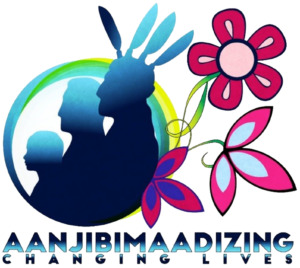SECTION SIX: PROGRAM RESOURCES
6.1 USE OF TECHNOLOGY
Describe the use of technology, both in person and at a distance/hybrid learning, to improve student access to programming, enhance the quality of instruction, and lead to improved outcomes for students.
Throughout the challenges of COVID-19, Aanjibimaadizing continued to provide services to all clients utilizing a variety of virtual platforms; including Zoom and online applications developed with Laserfiche. Throughout the pandemic, Aanjibimaadizing increased the number of clients served, created jobs, and provided training and GED assistance to support job skill development.
Positives to come out of the pandemic include the ability of staff to work remotely, a digital billing and payment system was installed, website developed, and increases to our outreach through a variety of digital means.
Classroom technology includes:
District I – Onamia Classroom
- Desktop computers (7)
- Staff computers (5)
- Laptop (1)
- In-classroom printer
- There is an adjacent testing room with a student desktop computer
- Large screen monitor
District II – McGregor
- Desktop computers (3)
- Staff computers (1)
District III – Evergreen
- Desktop computers (2)
- Staff computers (1)
District III – Aazhoomog
- Desktop computers (2)
- Staff computers (1)
In addition to this, each office has access to a copier/printer; webcams, headphones, projectors, and calculators. All Instructional Staff also have laptops. We have purchased Chromebooks that clients can check out to work on educational goals and can assist with internet as a “payer of last resort.”
All computers have licenses for Microsoft Office and access to Google Apps. Through a partnership with Nay Ah Shing Schools, we can create aanji.org Google accounts for our clients. We have 20 reusable seats for Essential Education’s “Academic Bundle.” We also use NorthStar Digital Literacy, and GED® Testing Service LLC.
We will need access and training for SiDs.
6.2 OUTSIDE RESOURCES
Describe any resources, other than state and federal ABE funding, that are used to support ABE programming. This can include financial resources, such as grant funding or charitable contributions. It can also include coordination with community partners to provide support services such as transportation, counseling or childcare. (Refer to data collected about student barriers in item 2.4. Also refer to items 5.3 and 5.4 as appropriate.)
As a tribal entity, Public Law 102-477 provides the majority of our funding. This is very similar to Red Lake ABE. We provide support services in house but work closely with many other Mille Lacs Band Departments and use their services as appropriate. This includes Information Services for technology needs and Human Resources for job applicant services, among others. As White Earth ABE does, we expect to coordinate with Mille Lacs Corporate Ventures to promote ABE services.
